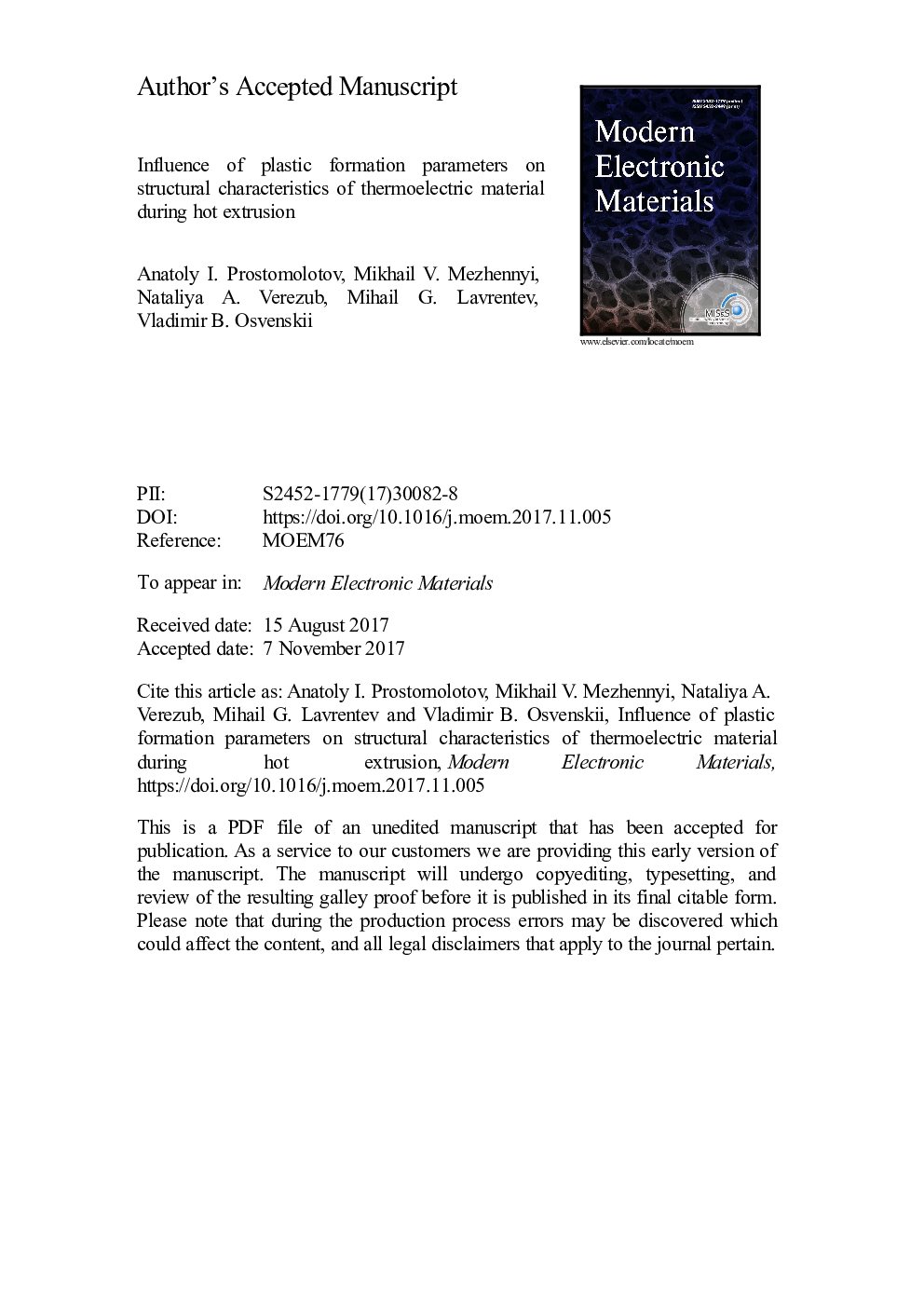| Article ID | Journal | Published Year | Pages | File Type |
|---|---|---|---|---|
| 7924411 | Modern Electronic Materials | 2017 | 20 Pages |
Abstract
We used mathematical modeling to compare the stress and deformation in a Bi0.4Sb1.6Te3 solid solution base thermoelectric material for extrusion through different diameter dies. The results show that extrusion through a 20Â mm diameter die produces a more inhomogeneous deformation compared with extrusion through a 30Â mm diameter die. Extrusion through a die of a larger diameter produces a structure that is coarser but has a more homogeneous grain size distribution. The degree of preferential grain orientation is higher for extrusion through a larger diameter die. We found a change in the lattice parameter of the solid solution along the extruded rod, correlating with detect formation during extrusion. The concentration of vacancies is higher for extrusion through a smaller diameter die. This difference between the structures results from a more intense dynamic recrystallization for a smaller diameter die. Increasing the die diameter and lowering the extrusion temperature allow retaining the thermoelectric properties of the material due to a better texture.
Related Topics
Physical Sciences and Engineering
Materials Science
Electronic, Optical and Magnetic Materials
Authors
Anatoly I. Prostomolotov, Mikhail V. Mezhennyi, Nataliya A. Verezub, Mihail G. Lavrentev, Vladimir B. Osvenskii,
